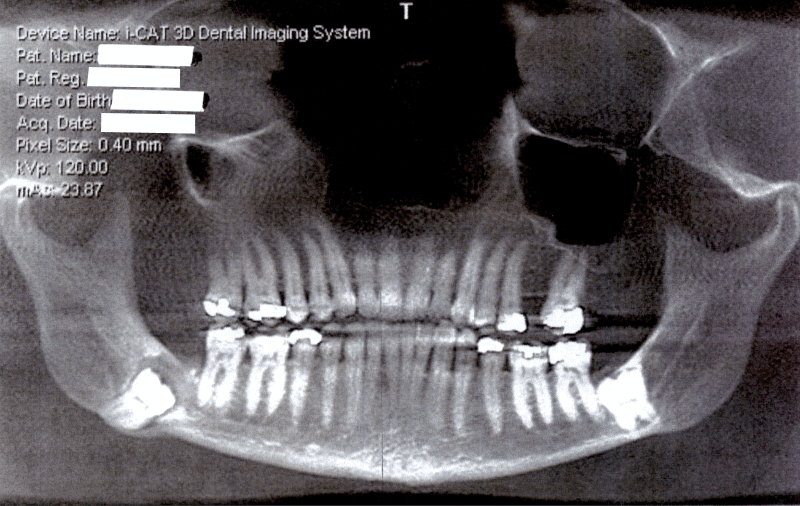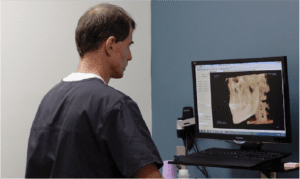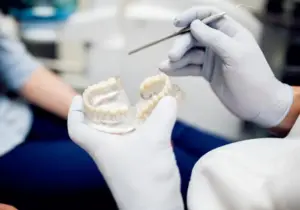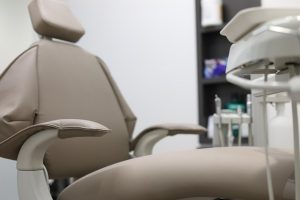
Visiting a dentist who specializes in removing wisdom teeth is a rite of passage for a large chunk of the population. Wisdom teeth are the last set of molars to come in to an adult mouth. Because of a huge change in the human diet over time, jaws have shrunk, and wisdom teeth are no longer needed to chew through food. In fact, they end up causing more problems in the mouth than anything. A wisdom teeth removal dentist can fix up nearly any complication related to those elusive third molars. Here’s how.
Common Issues Associated with Wisdom Teeth
Most people will wait to see a wisdom teeth removal dentist in their area until the wisdom teeth breach the surface of the gums. Once a patient reaches their late teens or early twenties, their dentist will start to keep a close eye on wisdom teeth movement. This allows them to see a dentist who pulls wisdom teeth at the right time before any complications occur.
However, if this doesn’t happen, common issues can take form due to the presence and movement of the wisdom teeth. Patients who experience complications with their third set of molars might notice:
- Impaction
- Crowding
- Pain and discomfort
- Cysts and tumors
If patients experience any of these issues, it’s a surefire sign that they should get in to see a wisdom teeth removal specialist. Left untreated, these complications lead to regular infections, shifting teeth, and even possible damage to adjacent teeth and roots.
The Role of a Wisdom Teeth Removal Dentist
Once a patient has made the decision to get their wisdom teeth removed, they’ll visit a local dentist surgeon who pulls wisdom teeth. Before getting right into it, the surgeon will want to give an oral examination. This includes taking x-rays of the mouth as well as constructing a personalized treatment plan for the patient.
X-rays and 3D imaging are highly valuable tools for wisdom teeth removal dentists. They’re basically like a map of what’s going on below the patient’s gum surface. With specialized 3D imaging, dentists who work in removing wisdom teeth are able to build a tailored, step-by-step plan to take out their patient’s wisdom teeth.
During the procedure, the dental specialist who extracts wisdom teeth will administer localized or IV anesthesia to the patient. This keeps them in a relaxed, twilight-like state where they drift in and out of sleep. In conjunction with a localized anesthetic, they won’t be able to feel a single drill.
Simple vs. Surgical Extractions
Depending on how far along wisdom tooth development is, wisdom teeth removal dentists will perform either a simple extraction or a surgical extraction. Simple extractions are probably the easiest. These happen when the wisdom teeth are very much visible above the surface of the gums and can be grasped with instruments. Dental surgeons who deal in wisdom teeth removal use objects like elevators and forceps to loosen and remove the tooth, respectively. Localized anesthesia is the only sedative used here, and recovery only takes a few days.
A surgical extraction is performed by a wisdom teeth removal dentist when the teeth aren’t fully accessible or are still right below the gum line. This is a more complicated surgery and requires the wisdom teeth extraction specialist to make incisions in the gum tissue to access the teeth. They may need to split the wisdom teeth up into smaller fragments to fully remove them. This type of wisdom tooth extraction surgery uses both localized and IV sedatives and takes a longer time to fully recover.
A Wisdom Teeth Removal Dentist’s Role in Post-Op Healing
Once the surgery is completed, the dental surgeon who removes wisdom teeth will send their patient home with detailed post-operation instructions. For fast healing times, patients are advised to follow the instructions as closely as possible.
Most post-op instructions give patients remedies for pain management and swelling reduction, especially in the first day or two after the surgery. The wisdom teeth removal dentist will likely also check in to ensure the healing process is going as anticipated.
Make sure to follow the instructions, particularly when it comes to dietary restrictions. No one likes to hear it—or live it—but anyone who’s recently had their wisdom teeth pulled is limited to a soft food diet for at least the first handful of days following surgery. Eating food that has the consistency of porridge is a small price to way to avoid tearing open healing wounds.
Don’t let wisdom teeth pain hold you back or cause further complications down the road. We’re an experienced wisdom teeth removal dentist who sees patients with wisdom tooth pain frequently. Contact us to schedule an appointment or consultation.









